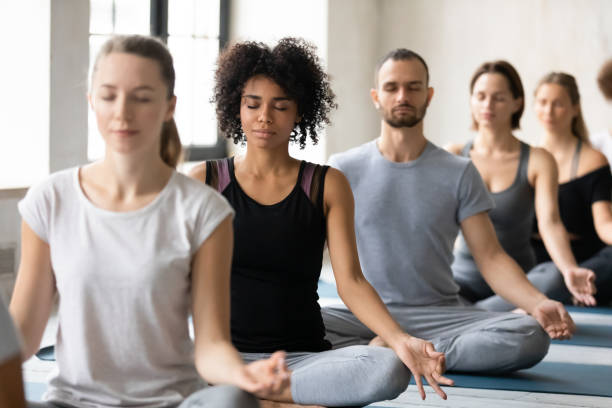Why Online Yoga Classes Are Transforming Wellness

In today’s fast-paced, digitally connected world, self-care has become more important than ever. Among the many wellness practices available, yoga stands out as a timeless discipline that nurtures both body and mind. Traditionally practiced in serene studios or community spaces, yoga has now found a new home online. Online Yoga Classes are no longer a niche offering—they’ve become a mainstream path for millions of people worldwide to improve their health, flexibility, and peace of mind.
If you’ve ever considered rolling out your mat in your living room and joining a session led by a teacher hundreds of miles away, you’re part of a growing trend. This blog will explore why online yoga classes are revolutionizing wellness, the benefits they bring, and tips on how to make the most of your virtual practice.
The Rise of Online Yoga
The popularity of yoga itself isn’t new. For centuries, it has been practiced to cultivate strength, flexibility, and inner stillness. But the way people access yoga has shifted dramatically in the past decade. The global digital transformation, accelerated by the COVID-19 pandemic, pushed wellness industries online. Suddenly, practitioners who once commuted to crowded studios discovered they could connect with expert teachers through a laptop, tablet, or even smartphone.
What began as a temporary solution has turned into a lasting movement. Online yoga platforms, streaming apps, and live Zoom classes are now part of daily routines for beginners and advanced practitioners alike. The accessibility and diversity of offerings—everything from gentle restorative yoga to dynamic power vinyasa—have made yoga more inclusive than ever before.
Why Choose Online Yoga Classes?
1. Flexibility in Schedule
Life is busy. Between work, family, and other commitments, setting aside time to travel to a studio can feel overwhelming. Online yoga eliminates this barrier by allowing you to practice whenever and wherever it suits you. Whether you’re a morning person who enjoys a sunrise flow or someone who needs a late-night wind-down, virtual classes are available on demand.
2. Access to Global Teachers
In-person yoga often limits you to local instructors. With online classes, geographical boundaries disappear. You can learn from renowned teachers in India, explore specialty classes from experts in Europe, or attend workshops hosted across the globe—all without leaving your home.
3. Affordability
Studio memberships can be costly. Online yoga platforms usually offer more budget-friendly subscriptions or even free resources on YouTube and wellness apps. This accessibility ensures that yoga is no longer a privilege but a practice available to anyone with an internet connection.
4. Comfort and Privacy
For beginners, stepping into a yoga studio can feel intimidating. Practicing at home gives you the comfort of privacy. You can explore different poses at your own pace without comparing yourself to others. Plus, if you’re shy about your practice, online classes provide a safe and supportive space to build confidence.
5. Variety of Styles and Levels
From calming yin yoga to energetic ashtanga, online classes offer endless styles. Many platforms also categorize sessions by duration and level of experience, making it easier for students to find exactly what they need—whether it’s a five-minute stretch or a 90-minute power flow.
Overcoming Common Challenges
Of course, online yoga isn’t without its hurdles. Here are a few challenges and how to overcome them:
- Lack of Motivation: Without the accountability of showing up at a studio, it’s easy to skip a session. Solution: schedule classes on your calendar and treat them like important appointments.
- Technical Glitches: Internet issues or platform bugs can interrupt a class. Solution: test your setup before class and keep a backup video ready.
- Missing Community: Studios often provide a sense of belonging. Solution: join online forums, engage in live chat during virtual classes, or practice with a friend over video call.
By being mindful of these potential obstacles, you can create an online yoga routine that is sustainable and enjoyable.
Tips for a Successful Online Practice
- Create a Dedicated Space
Even if it’s just a corner of your living room, designate a peaceful spot for your yoga mat. Add small touches like a candle, plant, or essential oil diffuser to set the mood. - Invest in Basics
A quality yoga mat, comfortable clothing, and props like blocks or straps can make a big difference in your practice. - Set Intentions
Begin each class with a personal intention. Whether it’s to improve flexibility, reduce stress, or simply enjoy movement, an intention keeps your practice mindful and meaningful. - Listen to Your Body
Without a teacher physically present to correct posture, it’s essential to honor your body’s limits. Avoid pushing too hard and prioritize alignment and safety. - Experiment with Styles
One of the best parts of online yoga is the variety. Don’t be afraid to try different teachers and styles until you find what resonates with you.
The Mental and Emotional Benefits
Beyond the physical aspects—improved flexibility, strength, and posture—yoga is deeply connected to mental well-being. Online yoga classes make these benefits more accessible:
- Stress Relief: Gentle breathing exercises and mindful movement help calm the nervous system.
- Improved Focus: Consistent practice enhances concentration and clarity, which can carry over into work and daily life.
- Emotional Balance: Yoga encourages self-awareness, which supports emotional resilience in times of stress.
In an increasingly digital and distracting world, online yoga offers not just convenience but also a much-needed anchor for mindfulness.
The Future of Yoga Is Hybrid
The wellness industry continues to evolve, and the future of yoga is likely to be hybrid—a mix of in-person and online offerings. Studios are reopening, but many continue to livestream classes or provide digital libraries. This blended model means students can enjoy the community of a studio while still accessing the convenience of home practice.
As technology advances—think VR yoga, AI-powered posture correction, and personalized digital coaching—the possibilities for online yoga will only expand. What remains constant, however, is yoga’s core purpose: cultivating harmony of body, mind, and spirit.
Final Thoughts
Online yoga classes are more than just a digital trend—they represent a powerful shift in how we approach health and wellness. They break down barriers of time, location, and cost, making yoga accessible to anyone willing to try. Whether you’re a beginner exploring your first downward dog or an advanced practitioner seeking global teachers, online yoga has something to offer.
At its heart, yoga is not about where you practice but how you connect—with your body, your breath, and your inner self. The digital mat is open, waiting for you. All you need to do is show up.
Visit: www.theyogainstitute.org

